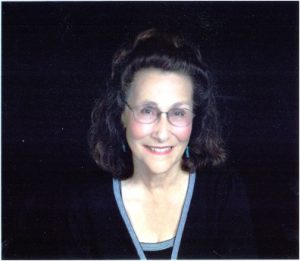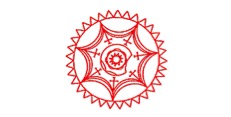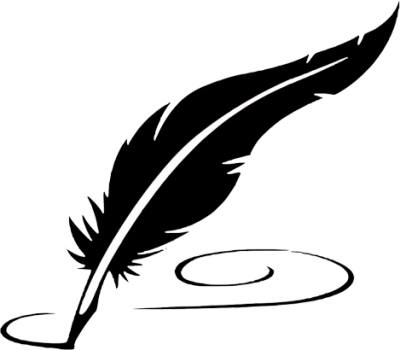Mi’kmaq Creation Story
for Faith Liljegren upon her Confirmation
Of course you are familiar with the Genesis creation stories, and know others exist in different cultures around our world. We Mi’kmaq have our version, too—deep and involved. It goes something like this:
All life seen and unseen comes from me,
always creating, never still. I am Kisulk—
dancing with the northern lights,
swirling through galaxies in deepest space,
riding restless undulations of ocean waters.
I cause seeds to become plants,
transform embryos to animal life.
Great light of the universe, center of your heart,
I give you your shadow, holder of ancestral spirits,
maternal and paternal great-grandparents,
aunts, uncles, and many cousins
whose traits and love reside in your bones,
your blood, your smile, all of your behaviors.
Commonly called Grandfather Sun, I am Niskam.
Imagine yourself upright, Uksitgamu,
on the skin of a drum, Wesgijew,
racing around on its field of grass,
tuned to the rhythmic beat of my heart.
I am Mother Earth or Ogijinew.
All my children I lovingly birth to live
in relationship to one another, and to me.
Kluskap our hero came to life from lightning bolts,
dirt, leaves, sticks, feathers and bones.
His body stayed stuck in the dust until
three winters passed. Then he stood,
began to walk around, wondering about his purpose.
Kit-pu, the bald eagle flew down, offering a feather,
promising a family would come to help.
An old woman sat on a rock. Kluskap asked her
who she was. “I am your grandmother, Nukami,
born from this rock and its dew. I am here to teach you
about the sky, our spirit road and shadows, winds and tides,
how to make a fire and survive with the help of plant
and animal friends. If you respect my wisdom and knowledge,
this rock will help you comprehend your place in our world.
Wju’sun, or Whirlwind, roiled the ocean, causing pebbles,
sand, sticks and shells to mix with foam. The wet mass
landed in a sweetgrass patch, where Kluskap found his Nephew,
a gift of the ancestors. Of strong limbs, Nephew offered
his strength and a willingness to learn.
In return, he asked Kluskap and Nukami to support
his vision—a good future for all of life.
Kisulk, Niskam and Uksitgamu
used the morning dew of a leaf to create
Mother—Nigan aganim kwoseesg.
She gives strength to her children, shows them
color—rainbows, blue sky, white of snow,
green of sweet fern, even black of night.
From her they learn to rely upon each other.
*******
Of course you know the importance of seeing many sides of a story. We Mi’kmaq call this etuaptmumk—two-eyed seeing—the ability to acknowledge the special beauty of all stories. The Christian God loves his creation. The Mi’kmaq Beings always help each other. Seeing the differences is important, too. But that’s another story.
Notes
Chief Stephen Augustine, Dean of Unamaki’ki College and Aboriginal Learning at Cape Breton University, is my primary teacher regarding this Mi’kmaw Creation Story.
Many thanks to Blair Gould for providing the phonetic pronunciations below for the Mi’kmaq words in this poem. She is the Mi’kmaq Language Coordinator at Mi’kmaw Kina’matnewey in Membertou, Nova Scotia.
1. Kisulk (gis-ool-k)
2. Niskam (nis-gum)
3. Uksitqamu (uk-sit-kam oo)
4. Wisgijew (wes-key-j-ew)
5. Ogijinew (kij-e-new)
6. Kluskcap (gloos-cap)
7. Kit-pu (kid-poo)
8. Nukami (new-gum-e)
9. Wju’sun (w-jew-sun)
10. Nigan aganim kweseesg (ne-gun ah-gun-im gwoh-see-sk)
11. Etuaptmumk (eh-do-up-tum-oomk)
 Alice Azure’s work has recently appeared in Yellow Medicine Review, Cream City Review, About Place Journal, Dawnland Voices: An Anthology of Indigenous Writing from New England, and Against the Current. Her chapbook, Worn Cities, was released in October of 2014 and awarded recognition in 2015 by Wordcraft Circle of Native Writers and Storytellers. Far from her Mi’kmaw country, she lives in the St. Louis Metropolitan Area and is a member of the St. Louis Poetry Center. More of her work can be read at www.aliceazure.com. Along with many other Mi’kmaw humanists, poets, lawyers, educators, artists and writers, her work is archived at Tepi’ketuek, http://mikmawarchives.ca.
Alice Azure’s work has recently appeared in Yellow Medicine Review, Cream City Review, About Place Journal, Dawnland Voices: An Anthology of Indigenous Writing from New England, and Against the Current. Her chapbook, Worn Cities, was released in October of 2014 and awarded recognition in 2015 by Wordcraft Circle of Native Writers and Storytellers. Far from her Mi’kmaw country, she lives in the St. Louis Metropolitan Area and is a member of the St. Louis Poetry Center. More of her work can be read at www.aliceazure.com. Along with many other Mi’kmaw humanists, poets, lawyers, educators, artists and writers, her work is archived at Tepi’ketuek, http://mikmawarchives.ca.

